Industry-Sponsored Student Capstone Projects
2024/2025
In the 2024/25 academic year the industry capstone program was supported by 65 sponsors, more than half of which were returning, and 96 real-world projects. Over five hundred fifty students from across the College of Engineering participated. Scroll down to learn more about each project.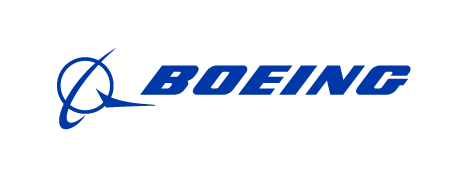
Boeing
Formation Flying Small Satellites EO/IR Missions
This student team will work to produce a system design report, similar to a proposal for a novel space mission including overall details of the space vehicle and the concept of operations. The end result this student team is working to achieve would be similar to a proposal for a NASA Small Explorers Mission (https://explorers.gsfc.nasa.gov/smex.html). This type of project will expose the student team to a variety of spacecraft system design problems requiring them to learn and exercise skills beneficial to work on a spacecraft development program. This capstone project also serves as way to connect Boeing engineers working on space systems with UW students and faculty. This project serves to supplement material in the spacecraft and space systems design courses for participating students, and give students an opportunity to apply their coursework experience to a relevant problem. This student team will work to spend at least 3 hours/week on the project, including 1 hour/week with a Boeing mentor. This student team will work to get ideas from mentor(s) about what to research and then do that research independently. This student team will work to do basic system modeling in CAD, MATLAB, STK, etc. to estimate and quantify system performance parameters such as power, mass, propellant, and RF communication link budgets, mission orbit design and trajectory, etc. This student team will also work to model the system and use systems engineering skills to investigate the relationships between spacecraft mass, power system, and propulsion system choices. This student team will also work to conduct trade studies on key subsystem parameters to finalize their design concepts. This student team will also work to develop a Concept of Operations (CONOPS) for the mission and an OV-1 (operational view) describing the key functions the system is performing and develop high-level mission objectives and system requirements for their mission. Finally, this student team will work to create a schedule and cost estimate for the mission based on similar missions and cost estimating relationships. The outcome this student team will work to achieve is a production of a report and presentation proposing the system design for their mission. The students will work to include the following elements in the report/presentation: mission description, mission objectives, driving requirements, mission architecture, trajectory and maneuver design, spacecraft architecture (subsystem design for structures, electrical power system, propulsion, comm, GN&C, payload, etc.), launch vehicle selection, system-level trade studies (propulsion system choice, electrical power system choice, radio, etc.), and systems engineering technical resources (e.g. spacecraft mass budget, power budget, link budget, propellant budget, etc.), and a high-level cost and schedule estimate.

Boeing
Inclusive Design and Accessibility in Aerospace
Motivation: The aerospace industry plays a crucial role in connecting people and goods across the globe. However, there are significant challenges related to accessibility that hinder the full participation of diverse user groups in aerospace travel. To address this issue, a multi-disciplinary team of engineering students, specializing in human-centered design, human factors, mechanical engineering, software engineering, and other relevant engineering departments, will collaborate on a university capstone project. The team will be guided by a mentor from Boeing, aiming to develop innovative solutions that not only improve accessibility in aerospace, but push solutions beyond ideas the company has already explored. 1. Performance Criteria: (a)Humane Interface -People want to interact with and use the solution. It's useful, accessible, safe, healthy and effective. It prevents injury and promotes safety. (b) Diversity & belonging - Solution can be used by a wide range of people, empowers diverse range of people to participate. Improves aerospace accessibility for people living with disabilities. (c) Repeatability at scale - The solution can be replicated and repeated, scaled and expanded to reach many people and areas of aerospace industry. (d)Sustainability - Solution is sustainable and easily maintained (e) Cost effective - Solutions that are cost prohibitive may not be used or feasible. This student team will work to deliver tangible user experience outcomes that contribute to measurably enhance accessibility in aerospace for people with disabilities. Students may prototype designs, software applications, follow industry guidelines and regulations with guidance of Boeing, and make recommendations for policy improvements. The project will provide valuable insights and actionable recommendations to Boeing and the aerospace industry as a whole, fostering a more inclusive and accessible environment for all users. Some examples of possible deliverables to achieve the desired outcomes are: (1) accessibility assessment, (2) conceptual design (3) software applications (4) testing and validation reports (5) policy and recommendations (6) final project report

Boeing
Life Cycle Assessment of Electrocoating Process
Electrocoating (E-coat) is a paint application process that uses electrical current to deposit charged paint particles onto a conductive substrate. This technique has numerous sustainability benefits such as minimizing paint waste through continuous reuse of the resin, eliminating single use maskants by minimizing paint overspray, and achieving a uniform coating thickness across complex parts. Recent advances in this technology make it an appealing candidate for use in aerospace, however the full impact of the application is unknown. Life Cycle Assessment (LCA) is a methodology for assessing environmental impacts of a product that accounts for all stages of the product life cycle. The goal for this student team is to complete a full LCA of E-coat processes and make recommendations for future design considerations. The student team will develop Life Cycle Assessment of E-coat materials and processes. Include an analysis of upstream considerations (e.g. resin composition, equipment design), manufacturing operations (e.g. operating parameters, resin recycle efficiency, waste disposal), end product performance and use (e.g. coating thickness uniformity, part design constraints, durability), and end of life (e.g. disposal, recycling). The final deliverables for this student team will be a literature review of E-coat processes and design considerations. A report documenting the input parameters and outcomes from a Life Cycle Assessment. Recommendations for the future work based upon the conclusions drawn.

Boeing
P-S Pneumatic Fittings with Connectivity Detection
Pitot-static pneumatic lines are a critical component to an aircraft’s avionics, connecting pitot probes and static ports to the sensing elements (transducers) that measure pressure. This pressure information is used for computing airspeed, altitude, and mach. Occasionally, these pneumatic lines must be disconnected for maintenance purposes. If maintenance personnel forget to re-connect the lines, the aircraft is at risk of taking off in an unsafe / non-dispatchable state. While checks and procedures exist to reduce the risk of this occurring, the potential for human error remains. Presently, air data systems do not have reliable means of self-detecting a disconnected line. Today’s standard probes and sensors used throughout the industry, are not “smart enough” to know the difference between a connected and disconnected line. Other aircraft systems that use pneumatic lines (hydraulics, oxygen lines) pressurize their lines; systems can recognize when a line is not holding pressure. Air data systems are not pressurized. When an aircraft is on the ground, prior to takeoff, the measured pitot-static values look the same whether the lines are properly connected or not. A disconnected pitot line results in a sluggish or non-responsive airspeed during takeoff roll – usually leading pilots to perform a Rejected Takeoff (RTO). A disconnected static line typically produces no obvious adverse effects until the aircraft is already airborne – too late to RTO. This student team will work to design, develop, and produce a prototype of a pitot-static system with means of self-detecting the connectivity of its pneumatic fittings. A diagram provided by Boeing that will be made available to the student team illustrates one possible implementation the student team could work to pursue, which is incorporating an electrical connectivity circuit into the pneumatic line – a circuit that can only be closed when all connections are made. This student team will also work to explore alternative implementation proposals. The outcome this student team will work to achieve is a proof-of-concept prototype of a pitot-static system with the capability of self-detecting disconnected pneumatic lines. This student team will work to create a potential safety enhancement for future aircraft and/or retrofit in existing fleets.

Boeing
Recommissioning Wind Tunnel Flow Sensor Arm
The Kirsten Wind Tunnel (KWT) has conducted numerous measurement campaigns with Boeing over the years. In some of those campaigns, Boeing has brought a quantitative wake survey system (QWSS) that allows for three-dimensional surveys of the wake of vehicles by moving a probe around the test section. The goal of this capstone student team is to resurrect an older model of QWSS (to be donated by Boeing, lacking independent control system or software) such that this capability can become a mainstay of the KWT. The capstone team will have to refurbish the system, verify its structure integrity, integrate it into the tunnel and create new motor control and positioning electronics. At the end of the effort the new QWSS system will be tested in the KWT to verify its operation. The probe must be able to move to a design location with a specific speed and hold that position within a specific tolerance. It must remain stiff and not become structurally excited by the flow in the tunnel. It must operate under power and consumption specifications. Software will be created that will allow a user to specify a range of discretized locations throughout that measurement domain, a hold time at each location and speeds of motion as well as a live update/visualization of the probes' location within the facility. It is desired to be able to operate QWSS in KWT, demonstrated by having the system sweep through a range of locations with the wind on in stop/start manner (move to location, take data move to next location). This would be demonstrated in the wind tunnel with the wind on, with a simple sensor such as a pitot tube, in the wake of a model to be chosen by Owen Williams and Boeing.
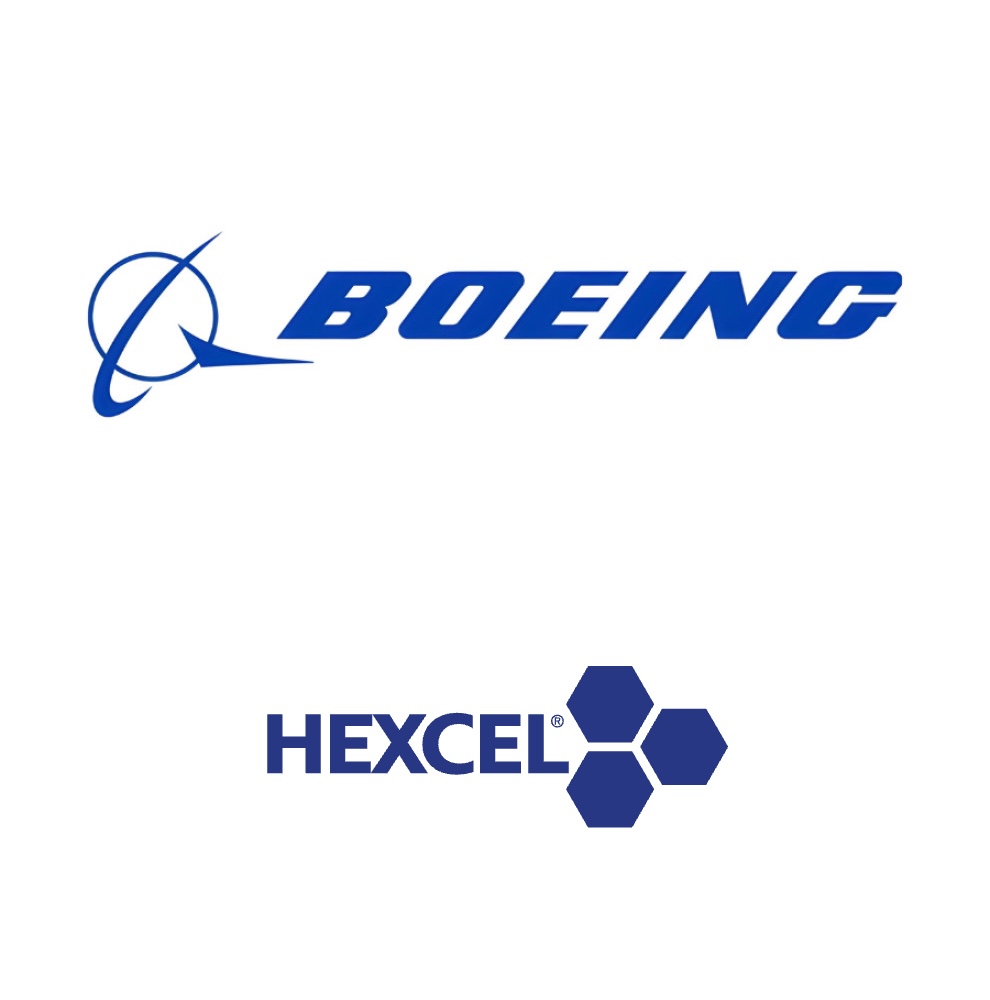
Boeing (with Hexcel)
Sustainable Composite Structures
The aerospace industry is continuously working to find sustainable solutions for composite structures. The integration of bioresource based fibers and resins can be challenging due to the extreme conditions a part is exposed to during use. Boeing and Hexcel are looking for a student team to optimize a composite processing method with a provided fiber and resin system for sustainable composites. Students will work to design a composite processing method to produced standard coupons used to evaluate tensile and shear loads using Hexcel HexPly® low temp Nature Range materials. Coupon level testing will be used to narrow processing methods to achieve desired (given) mechanical properties. A simple structure beam design target (modeled after SAMPE bridges) will be provided for students to process a part. Students will be asked to also provide a brief sustainability assessment using the STEEP (Social, Technological, Economic, Environmental, Political) framework on the materials used. Main deliverables: (1) a general processing method to achieve desired coupon level mechanical performance and (2) brief STEEP (Social, Technological, Economic, Environmental, Political) assessment on materials and process used. Secondary deliverable is to attempts to produce a simple beam structure.
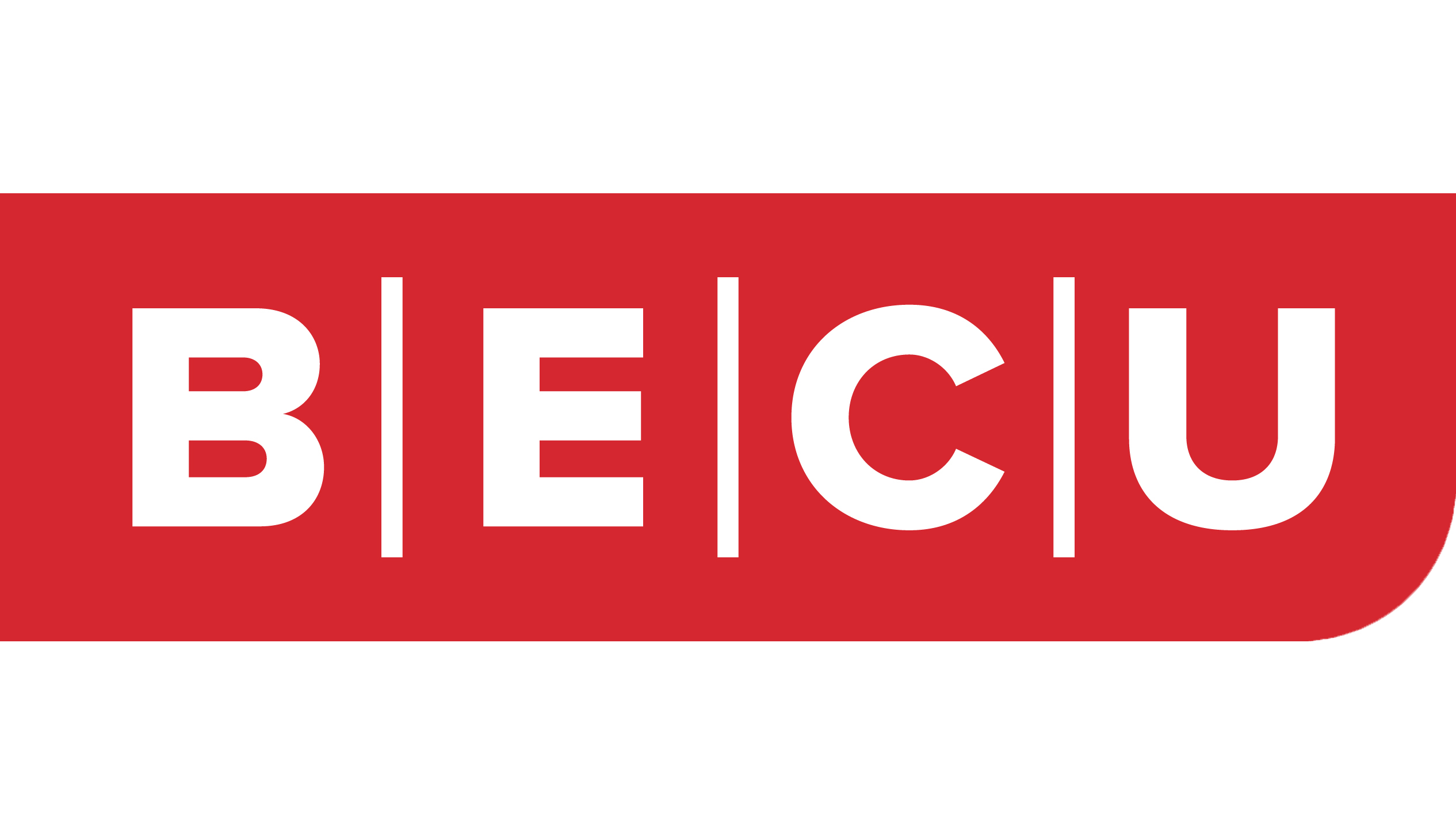
Boeing Employees' Credit Union (BECU)
Member Contact Center of the Future
This student team will work to create a 'Member Contact Center of the Future' to provide BECU Members a digital experience that is more secure while simultaneously minimizing 'friction'. This solution will allow BECU to compete with Fintech firms. A sample goal of the Member Contact Center of the Future that this student team will work to achieve is for BECU to validate/authenticate our Members without the need for onerous passwords and security questions. This student team will work to help BECU provide a digital offering to Members that enhances; self-service so Members can do more by themselves (with less person to person interaction), leverage Artificial Intelligence to raise/lower credit limits (for example), proactively offer BECU products based on need, i.e. college savings account for parents, utilize voice and biometric authentication. (These are examples of possible capabilities of a BECU Member Contact Center of the Future. There are many other possibilities.) This student team will not utilize BECU corporate nor member data directly for this project. The solution this student team is working to achieve should interface with a core banking system that houses customer accounts, products, balances, etc. The solution the student team is working to achieve needs to meet privacy and security requirements for a nationally chartered credit union. In summary, this student team will work to use engineering rigor to devise a Member Contact Center of the Future making use of various technologies including digital technologies, artificial intelligence, voice recognition, biometrics, and machine learning. This student team will work to design, assemble, implement, and test a prototype of a BECU Member Contact Center of the Future. This student team will work to research and provide the best infrastructure for the Contact Center of the Future. All the resources for this project are provided by UW. The desired outcome this student team will work to achieve is to create a functional prototype of a a BECU Member Contact Center of the Future.
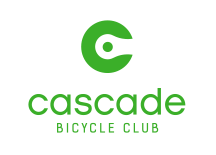
Cascade Bicycle Club
Portable Mount for a Bike Rack
This student team will work to design and build a transportable bike rack mount to provide learners with an opportunity to practice loading a bike on a bus bike rack. Cascade Bicycle Club will provide the bike rack. The student team will work to design and build the mount. Due to the size and weight of Cascade Bicycle Club's current bike rack and mount, it is not feasible for teachers and schools to use. This student team will work to design a new device that can be transported by one person safely up to 100 yards, up and down ramps, and preferably even over stairs. The device should also be as compact as possible, or modular, so that it can fit inside a standard size vehicle. The mount the student team is working to design and build should be no more than 5 wide and no more than 3.5 feet deep in order for it to Cascade Bicycle Club trailers, but these numbers are on the larger side. Having it be as compact as possible will allow for transport in vehicles and storage at schools. The mount should be on sturdy casters so that it can be wheeled around easily with the rack on it. The mount and rack should be able to be wheeled inside a standard door frame. As noted above, the mount should be lightweight enough so that one person can move it down ramps and/or stairs. If the mount is modular, then taking it apart without tools would be best, like some sort of click in system or a button to push to take the mount apart. The mount should be able to hold a bike rack and a bike, so roughly holding about 50 pounds. The desired deliverable the student team is working to achieve is to have a transportable, lightweight mount for a bike rack. (Think of this like a hand truck for a bike rack). The mount and bike rack will be used for educational purposes to help students learn how to use a bus bike rack for storing and transporting their bikes. Cascade Bicycle Club would like this to be something they can later outsource and replicate in order to serve the high number of schools their programs are in.
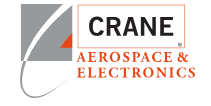
Crane Aerospace & Electronics
Sn62 Solder Water-Soluble Flux Paste System
Many legacy solder pastes include rosin-based fluxes in their chemistries. Rosin-based fluxes, while cleanable, are harder to clean and require special solvents. This student team will work to explore new flux systems that have water-soluble fluxes or water-cleanable flux chemistries for the future. This student team will work to learn about different flux chemistries for Sn62 pastes and how they affect solderability and perform material testing that could include cleanability, solderability, corrosion, and fractography. This student team will work to perform an industry search for Sn62 solder pastes, create a test plan, and carry out the test plan before suggesting a flux system. The students will be working alongside Crane Aerospace & Electronics (CAE) engineers who will support and supervise the students as needed. The new solder paste must create solder joints that pass IPC standards and be fully cleanable with water. Cleaned units must pass both IPC and MIL-STD inspection requirements. This student team will get to learn and interact with the main solder manufacturers and learn about the different environments CAE products experience. To reflow the solder pastes, students can come to CAE to reflow samples if UW does not have a sufficient reflow oven. Because solder pastes should be water-soluble, preliminary cleanability tests should be doable at the UW Seattle campus using a fume hood and beakers. Corrosion testing is a high temperature, high humidity, extended time test that should be performable at UW Seattle. Solderability and fractography testing of the solder joints should also be performed at UW Seattle. If needed, someone from CAE can support students testing at UW's facilities. If ROSE testing and SIR testing are available, that would be best for further cleanability testing. If there is time, students can come onsite to CAE and test on CAE's ROSE tester. SIR is outplanted at CAE. The outcomes the student team will work to achieve include: 1) Gain familiarity with J-STD-001, -004, -005, -006 and IPC-A-610 if not already familiar 2) Market search for Sn62 pastes that have a water-soluble flux system or is DI-water cleanable 3) Select pastes and obtain samples for testing 4) Create a test plan (consider factors like cleanability, solderability, corrosion, fractography, radiography, etc.) to perform at UW that meets internal and J-STD requirements & Design coupons 5) Develop test set up that can be done at UW 6) Carry out test plan with support of CAE engineers 7) Write up and present suggested materials based on their data
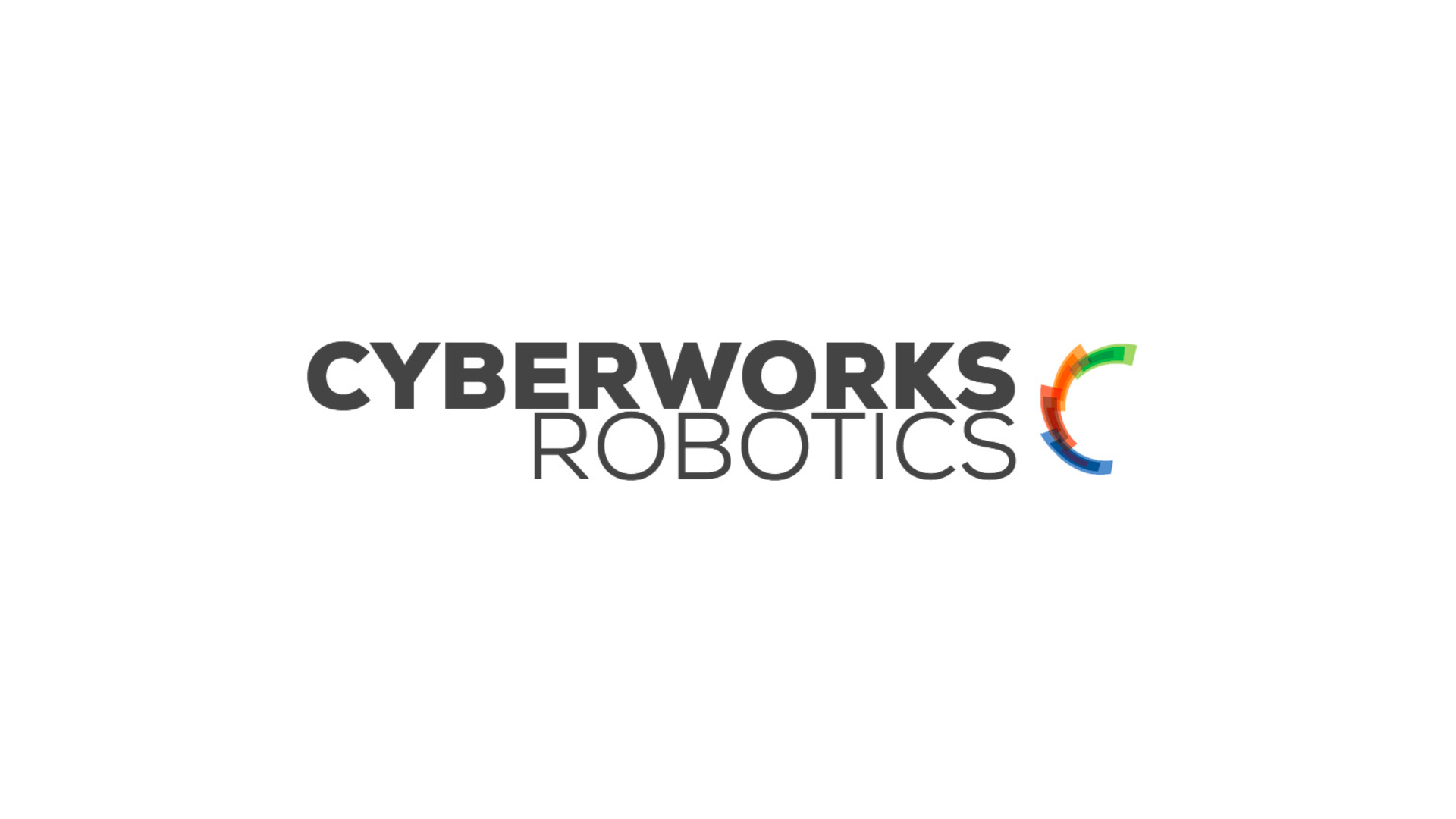
Cyberworks Robotics
Autonomous Self Driving Wheelchair
Autonomous Wheelchairs increase freedom and ease of mobility for the most vulnerable peoples in society. Large-scale campus-wide autonomous navigation of a power wheelchair faces numerous corner case confounds ranging from loss of localization due to feature-sparsity to human motion sickness. This student team will work to identify and address corner cases that allow for robust persistent navigation over vast indoor and outdoor regions within the UW campus and fleet integration to the cloud for remote monitoring, user authentication and over-the-air updates. Low hardware cost is essential to mass adoption of such technology. Therefore, this student team will also work to focus on use of inexpensive but cutting edge technologies such as monocular Neural SLAM and Dense Optical FlowML Behavior Cloning as a means to reduce or eliminate reliance on expensive LiDAR based visual SLAM. This student team will work to: - Identify of navigational confounds in a complex large scale indoor/outdoor environment - Apply AWS Robomaker cloud connectivity, monitoring, authentication and software management - Apply Point Cloud Obstacle Cluster Velocity Tracking - Apply graceful Motion based Navigation (U Michigan papers) The outcome this student team will work to achieve is graceful robust autonomous wheelchair navigation in large-scale real-world environments at an affordable price using the Cyberworks Autonomous Navigation Stack
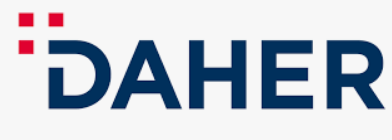
Daher
Impact of Crystallization Rate on Mechanical Properties of Thermoplastic Composite
The main objective for this student team is to assess the effect of Crystallinity degree on mechanical properties of a thermoplastic composite structure. The project is going to be articulated in different steps: -The first step will consist in manufacturing panels in press consolidation with different parameters to change crystallization rate. Time and temperature will be changed - During the 2nd Step: Panels will be checked by carriyng out non destructive control (visual and UT control) - Then DMA tests and DSC will be done to assess thermal transition temperature and degreee of crystallinity. - Flexural specimen will be extracted from panels. Care has to be taken for extraction to ensure no delamination or damages occur during extraction. If necessary, panel could be kept in furnace around 250°C during a defined time and samples will be tested. The deliverable of the project is a report giving impact of crystallization on the material properties.

Delta E Consulting
UW Building Decarbonization Retrofit
The Social Work / Speech and Hearing Sciences Building on the UW Seattle campus was built in 1980. It is listed in just “adequate” condition. The building is served by the central campus steam system and is partially cooled by on site chillers in lieu of central campus chilled water. HVAC systems were retrofitted to full DDC controls in 2017. The Energy Use Intensity (EUI) of 102.3 kBTU/ft² is high relative to similar building types. The age and EUI indicate there should be upgrade opportunities to reduce the building’s energy use intensity and the associated carbon emissions. -This student team will focus on the UW Social Work building (though two other buildings are under consideration) and will work to perform eQuest or IES software energy modeling as well as energy auditing using ASHRAE’s Building EQ protocol. The analysis will lead to a list of proposed energy efficiency upgrades. -This student team will work to spend a significant portion of the time auditing and modelling to study the details of the building’s current performance. Ideally, the student team's analysis will lead to a list of possible mechanical and other improvements (concept generation). After downselecting to the most promising measures, this student team will work to put together design details. The student team will analyze the measures before finalizing their recommendation. -UW facilities will provide view-only access to the build data; be available for questions throughout and a tour of the building at the start, and can be invited to periodic design reviews. -There will be an option for the team to enter the project results into the ASHRAE 2025 Building Energy Quotient Competition. This student team will work to deliver a summary of the energy audit/analysis of the building as is with a benchmark against similar buildings, and a series of recommendations for improvements (this is the 'design' portion), each with some analysis that would estimate the expected benefit and costs. A 2-tier proposal would probably make sense: a list of low-hanging fruit that could save an appreciable amount of energy and cost very little to implement, and a set of recommendations for more significant benefits that would also require more significant costs.

Expedition Medicines
Super-Glue – Interactive Web Tool to Facilitate Chemistry <> ML Collaboration
Machine learning is poised to make an enormous impact in the field of pharmaceutical chemistry. The rapidly increasing scale, throughput and accuracy of biological assays provides the perfect substrate for machine learning algorithms to make sense of the complex biological mechanisms that underpin disease in a way that humans are incapable. However, the intuition built from decades of drug discovery experience by expert medicinal chemists is a vital source of knowledge that is missing from the models built from these assays. Incorporating expert rules into our modeling strategies not only helps improve the performance of our models, but it is also crucial for building trust across domains and integrating ML into current drug discovery pipelines. This student team will work to create an interactive tool that will help facilitate this collaboration by providing a flexible framework for ML and MedChem teams to share knowledge through chemical annotations, computations, and predictions in a scalable and data-driven manner. Students will design an interactive web application that satisfies the following criteria: 1. Users can load and interact with static molecular databases containing structures, predicted properties and other metadata of interest 2. Users can run similarity searches on databases of known drug-like molecules and display the compounds that are most similar to a compound of interest 3. Users can interactively highlight, annotate and modify chemical substructures which can then be exported in a machine-readable format 4. STRETCH: Allow users to submit compounds through computational/ML pipelines served by cloud infrastructure Performance will be measured by successful implementation of all the above features in code. This will encompass all of the key steps in the software development cycle including the creation of design docs, submission of pull requests, code reviews, and CI/CD testing. By the end of the capstone, students will deliver a code repository containing all of the back-end and front-end infrastructure required for hosting the interactive tool on a web-based server. Students will also be asked to perform a live demo of the tool for the medicinal chemistry team at FL94.
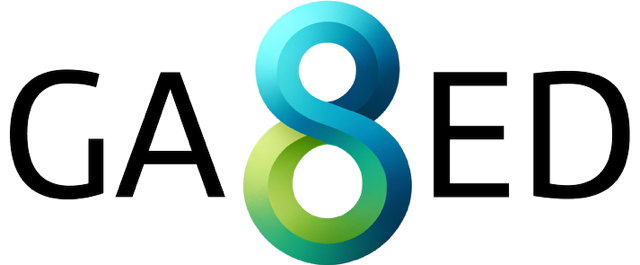
GA8ED
Real-Time Incident Detection for Neighborhood Safety
This student team will work to build an action and incident classification system that utilizes live camera feeds to detect safety issues in residential neighborhoods. The system should utilize multiple cameras to cover large areas, an edge embedded and cloud based inferencing sub-system that raises alerts when it detects safety concerns. The raised alerts should contain a description of the safety concern. The project should be built leveraging already existing technologies as much as possible and clearly identify areas that need to be developed. The system should have no more than a 10 second delay from the first occurrence of a safety issue to the notification of that safety issue. The following safety concerns would be targeted (listed in increasing order of difficulty): speeding detection, bear sighting, car prowler detection. In the case of animal detection, alerts should not be raised for pets / deer. The false positive (FP) and false negative (FN) rates for each of the safety issues should be under 20% and 5% respectively (initial goal at project completion). Students with work with mentors to synchronize on requirements, propose a design, build a prototype system, produce a final report of learnings, provide an end-to-end demonstration and present it at the capstone fair. Students should be able to validate and test the system both in lab settings and in real world settings (location will be provided).
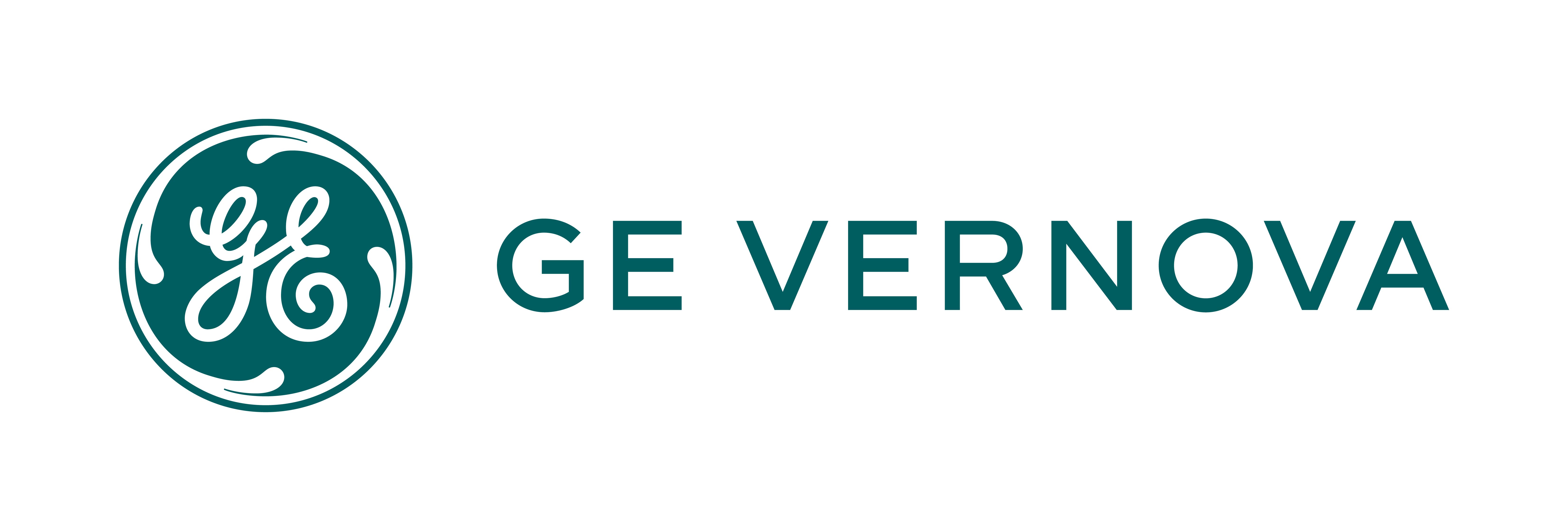
GE Vernova
Grid Optimization: AC OPF Software
The electric grid’s optimal power flow (OPF) aims to determine the optimal dispatch for power generation resources, flexible/controllable loads, energy storage, and power flow control equipment that optimize one or more objectives (e.g., minimize system operation cost, system losses). It is a core part of tools used by utilities to manage the electric system at different stages (e.g., long-term planning, mid-term operational planning in day-ahead, short-term operations in real-time), such as energy management system (EMS) and market management system (MMS). The linearized/simplified OPF problem (i.e., direct current (DC) OPF) is commonly used in industry practices because of its computational advantage/simplicity. Meanwhile, the alternating current (AC) OPF, that comes with improvements in system’s economics and operations compared to DC OPF, is within reach for industry adoption, thanks to proven advancements in optimization solvers and computational hardware capabilities. ARPA-E’s GO Competition achievements [https://gocompetition.energy.gov/], and ongoing disruptive changes in energy systems (e.g., increasing penetrations of distributed energy resources (DER), intermittent resources, energy storage, etc.) have proven the possibility and value of using AC OPF in industry applications. Accordingly, the project’s objective is to build a (scalable) electric grid software to solve the AC OPF problem for the electric grid, following ARPA-E’s GO Competition framework and results. This is a step towards building a testbed to experiment ideas and engage students and researchers to solve the AC OPF problem. It is a multi-disciplinary area that involves power systems, operations research (optimization), and software engineering domains. Participating students will have the opportunity to gain hands-on experience and deep technical understanding in these domains, which are valued by many leaders in the software and energy industries, including GE Vernova. Starting with “ARPA-E’s GO Competition Challenge 1” results, conclusions, and learned lessons from participants [https://gocompetition.energy.gov/challenges/challenge-1] to decide the design and details of the AC OPF software to build. It is expected to consider best practices in software design and development (e.g., modularity, scalability, flexibility, documentation) to be useful as a testbed to test ideas and/or as a core to build on top of it (e.g., more sophisticated mathematical formulation for AC OPF). The following are the key components: 1. AC OPF formulation: To start with a simplified version of GO Competition Challenge 1 formulation in [https://gocompetition.energy.gov/sites/default/files/SCOPF_Problem_Formulation__Challenge_1_20190412.pdf]. 2. Coding language: C++, Python, MATLAB, Julia, Java, AMPL, or any applicable language. 3. Optimization solver: IPOPT, or any solver that could handle the problem (e.g., Gurobi, CPLEX, as applicable). 4. Power system data sets (Inputs/Outputs): To follow on of the “ARPA-E’s GO Competition” formats and/or common formats used in the industry and academic research. Examples: [https://gocompetition.energy.gov/challenges/22/datasets] [https://electricgrids.engr.tamu.edu/] This student team will work to create a software that fulfills the following: 1. Takes power system data as an input, in a common format adopted by industry/researchers. 2. Runs the AC OPF for the power system and reaches an acceptable optimal solution within acceptable time window. Please refer to ARPA-E’s GO Competition for details. 3. Populates the results in a common data format adopted by industry/researchers. 4. Software documentation to make accessible and useable by the large community of researchers and students to explore AC OPF, test ideas, build applications on top of it, etc.
Related News
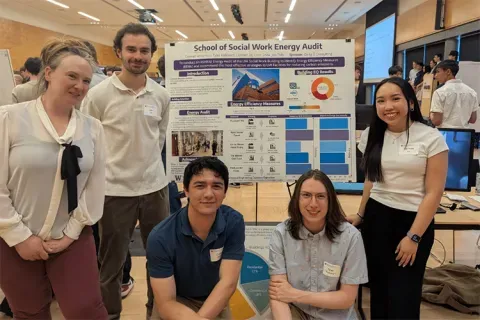
Mon, 10/13/2025 | UW Mechanical Engineering
Capstone collaboration leads to award
An ME capstone team received first place for its energy audit of the UW School of Social Work building.
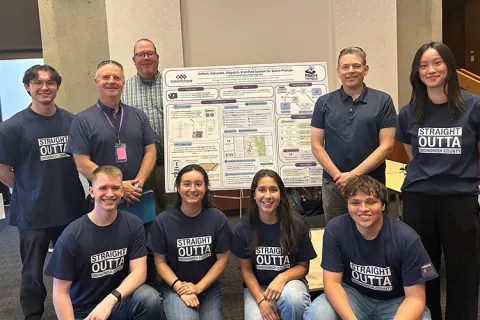
Thu, 07/17/2025
UW engineering students develop smart ballot solution
UW engineering students develop smart technology solution to improve ballot collection for Snohomish County.
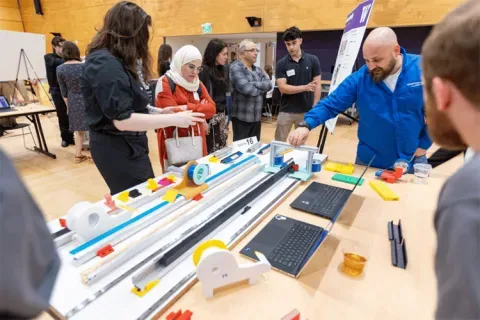
Mon, 07/07/2025 | UW Mechanical Engineering
Capstone creations
Students displayed innovative capstone design projects at the 2025 expo.
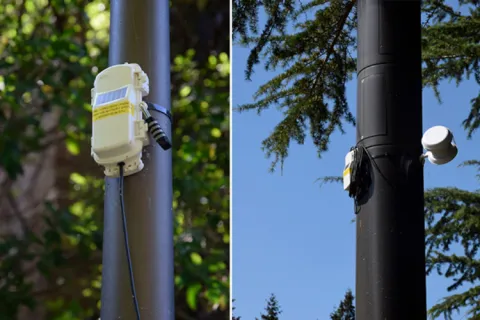
Fri, 09/20/2024 | UW Civil & Environmental Engineering
Smarter irrigation for a greener UW
A new project combines satellite data with ground sensors to conserve water and create a more sustainable campus environment.